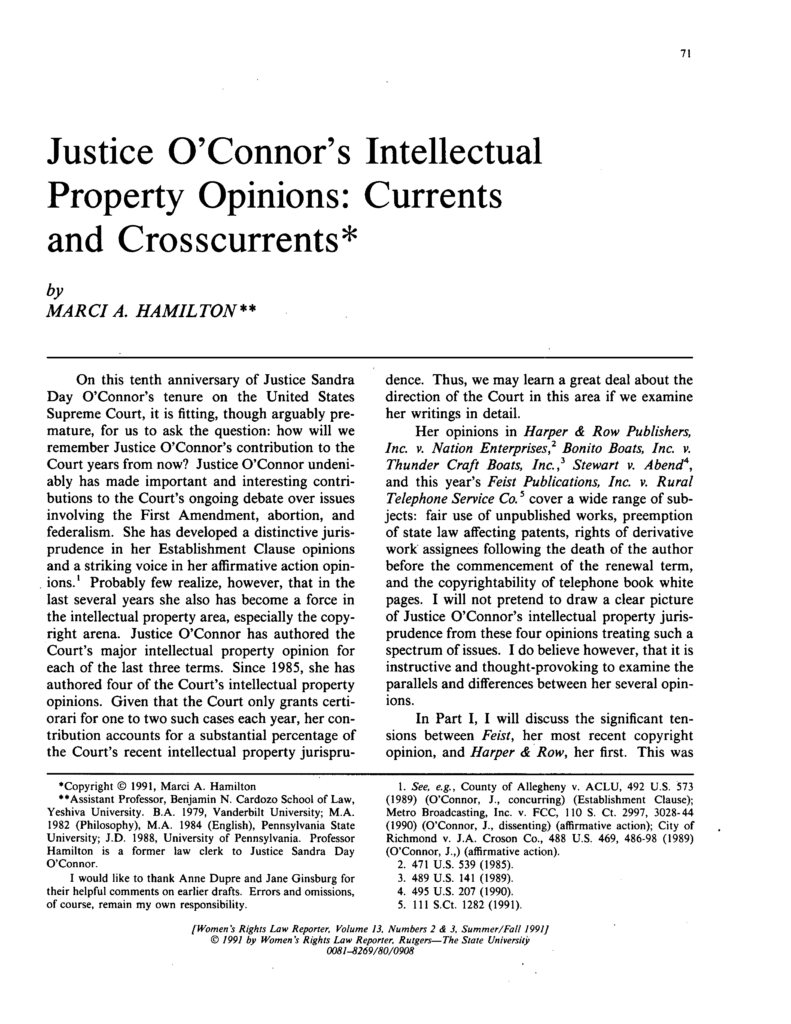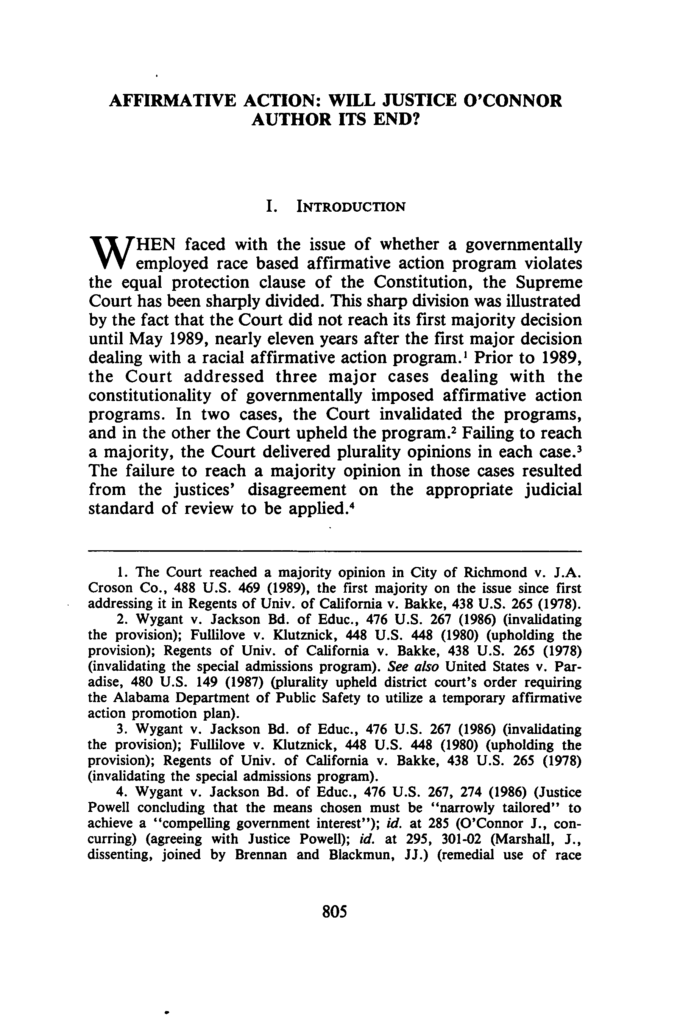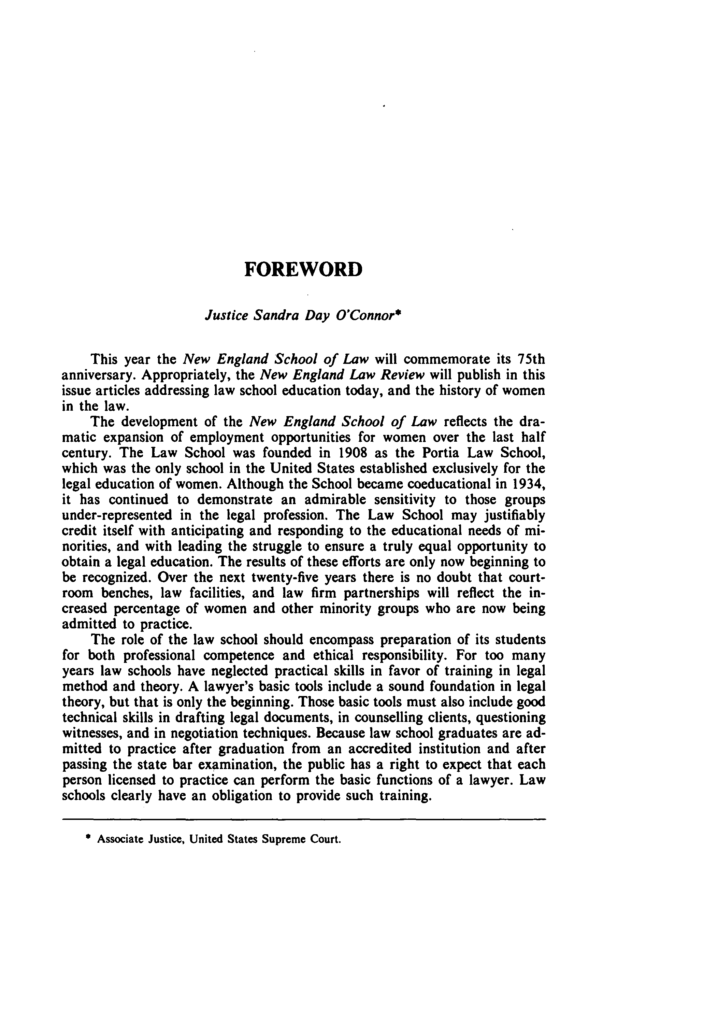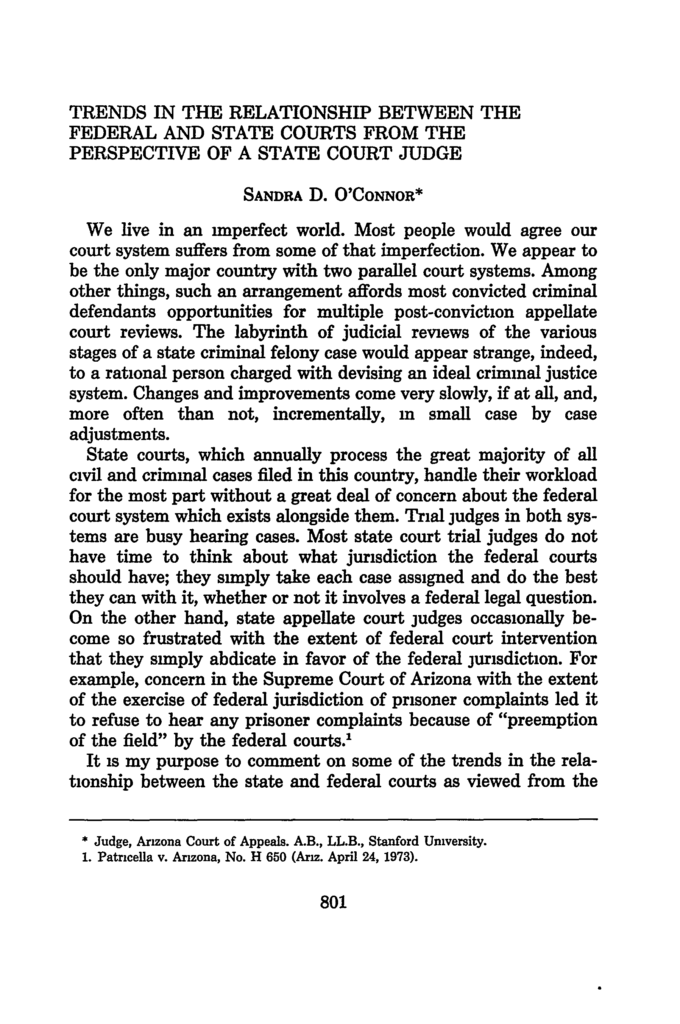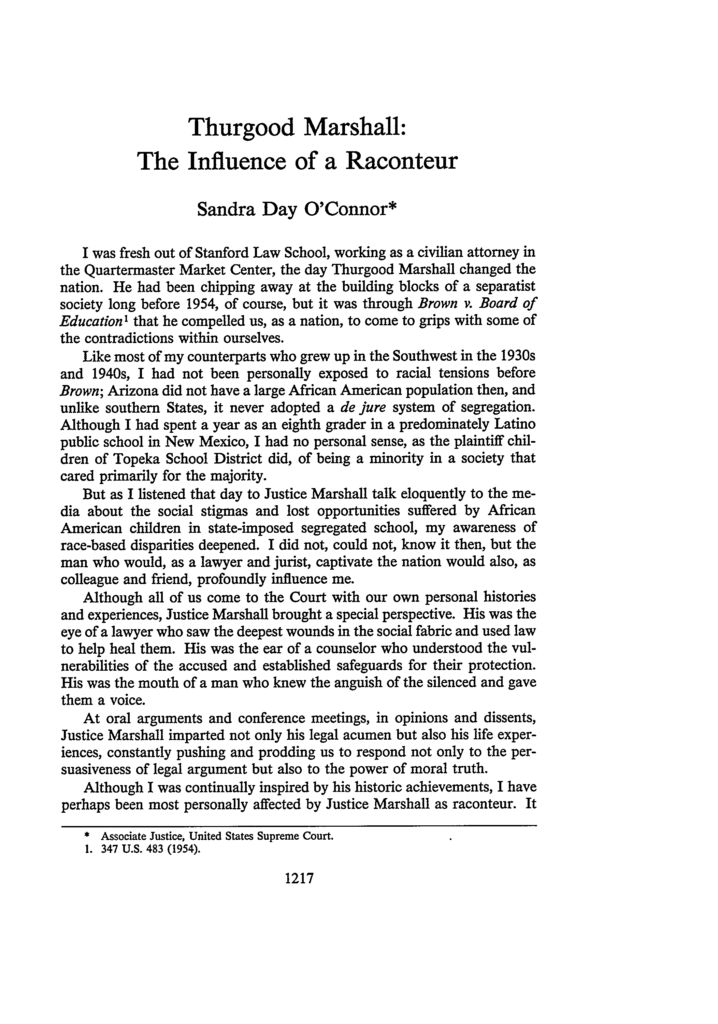Thurgood Marshall:
The Influence of a Raconteur
Sandra Day O’Connor*
I was fresh out of Stanford Law School, working as a civilian attorney in the Quartermaster Market Center, the day Thurgood Marshall changed the nation. He had been chipping away at the building blocks of a separatist society long before 1954, of course, but it was through Brown v. Board of Education1 that he compelled us, as a nation, to come to grips with some of the contradictions within ourselves.
Like most of my counterparts who grew up in the Southwest in the 1930s and 1940s, I had not been personally exposed to racial tensions before Brown; Arizona did not have a large African American population then, and unlike southern States, it never adopted a de jure system of segregation. Although I had spent a year as an eighth grader in a predominately Latino public school in New Mexico, I had no personal sense, as the plaintiff chil dren of Topeka School District did, of being a minority in a society that cared primarily for the majority.
But as I listened that day to Justice Marshall talk eloquently to the me dia about the social stigmas and lost opportunities suffered by African American children in state-imposed segregated school, my awareness of race-based disparities deepened. I did not, could not, know it then, but the man who would, as a lawyer and jurist, captivate the nation would also, as colleague and friend, profoundly influence me.
Although all of us come to the Court with our own personal

